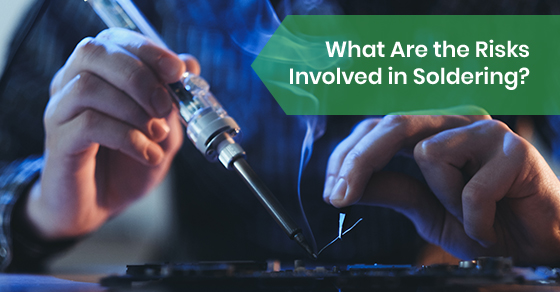What Are the Risks Involved in Soldering?
When it comes to BGA soldering, there are many risks that soldering neophytes need to be aware of. Soldering is a valuable must-have skill as far as electronic component engineering and manufacturing are concerned.
Some people make the mistake of doing a quick Google search on the topic and find articles that claim that soldering is an easy skill that amateurs can quickly pick up.
In reality, nothing could be further from the truth. The repair and soldering of electronic components should be left to the experts. This is because most electronic components and printed circuit boards have many expensive parts and can also be very delicate.
Given the precarious nature of these components, it is best to leave the work to professionals who have years of training and experience in BGA soldering. However, some people decide to take matters into their own hands using web tutorials, so here are some risks that you should be aware of if you decide to solder yourself:
Soldering Burns
The first risk that you need to consider before you even think of BGA soldering is the risk of burns. Soldering irons get hot as you work with them, with temperatures that can exceed 700 degrees Fahrenheit in some cases.
If you were to mishandle them, you might incur severe burns or skin charring. You could accidentally spill some of the hot solders onto yourself, resulting in significant pain.
You may also damage personal assets if you are not careful, causing irreversible damage or damage that may cost hundreds of dollars to repair. The iron will also need to be set down properly, or else you could start a fire.
Yet another risk is the risk of blindness, as the solder may splatter if you're not careful. You must always wear sturdy and reliable eye protection before you begin working with a soldering iron.
Solder Fumes
When it comes to solder, you have a few options at your disposal. For example, you can select a lead-free or a leaded version. It should be noted that leaded solder boasts superior workability and strength properties, although it is also notorious for its high toxicity levels. Some countries have banned the use of leaded solder outright, so the lead-free version may be your only option depending on where you live.
Even though lead-free solder is less toxic than its lead-based counterpart, it still poses several risks. For instance, it can produce very harmful fumes that can cause serious health problems that require hospitalization if you accidentally inhale them. The fumes may also irritate your eyes and obscure your vision if you do not wear adequate eye protection.
If you do decide to do some soldering yourself, you’ll need to prepare beforehand by ensuring that the area is properly ventilated. There should always be a gap of eight to ten inches between your project and your face as you work in order to reduce the risk of eye injuries and fume inhalation.
Improper Soldering Technique
Many experts agree that people who solder will need to practice their craft for quite some time before they truly get the hang of it, and growing pains come for most people before they get a real “feel” for it. Be prepared to practice and experience some frustration, especially during the initial stages.
Improper technique is also something that can cause problems for people who have limited experience with soldering. For instance, you may inadvertently form a “solder bridge” if you use too much solder, accidentally affixing 2 adjacent joints in the process.
Conversely, a lack of solder may yield a very feeble electrical continuity from the component to the circuit board. Or, you may fabricate a subpar connection by pulling the iron away in a hasty fashion, which may lead to a ruined joint.
It’s important to know when to apply the solder to the tip of the iron, and how much to apply. Failing to do so may lead to a subpar connection or solder balling. The boards will also need to be kept impeccably clean at all times, in order to reduce the risk of a mediocre connection. The heat levels will also need to be kept at optimal levels while working.
We suggest using a wet cloth to keep the tip of your soldering iron clean. Try and refrain from making it too moist, as doing so may reduce the temperature of the iron temporarily.
Lack of Knowledge
Being unfamiliar with printed circuit board components and repair work can cause headaches down the road, as you may inadvertently damage something while you’re working. For example, you should be well aware that soldering will lead to glue weakening issues within the boards, as the temperatures needed to solder are extremely high.
If your hands are unsteady while you are soldering, then the boards will likely separate and lift. Fortunately, the glue will return to its intended strength levels when the components are cooled. However, you still need to be very knowledgeable about how different temperature levels will affect the board’s components.
If you would like to learn more about the risks involved in soldering, call Circuits Central at 416-285-5550 or contact us here.

